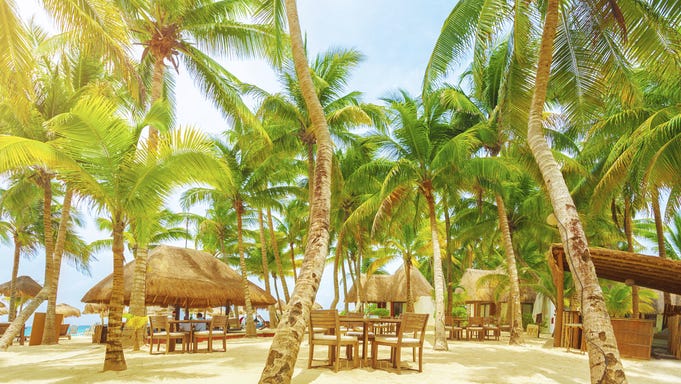Tuesday, August 26, 2014
BMW joins Audi in Mexico as German carmakers chase expansion

(Bloomberg) — Bayerische Motoren Werke AG joins rivals Audi and Mercedes-Benz with plans to build a car factory in Mexico as low wages and global expansion take precedence over “Made in Germany” exclusivity.
The $1 billion plant in the state of San Luis Potosi will be BMW’s second in North America when production starts in 2019, the Munich-based company said today in a statement. The plant’s capacity to build 150,000 vehicles a year will increase production in the region to as many as 600,000 cars, or about 30 percent of this year’s sales goal.
“The BMW group will be even better positioned to take advantage of the growth potential” in North and South America, Harald Krueger, the manufacturer’s production chief, said in the statement. “We are continuing our strategy of ‘production follows the market.’”
The world’s biggest manufacturer of luxury cars will be the last among the German rivals in making vehicles in Mexico, where labor costs are about 20 percent of U.S. levels. Daimler AG’s Mercedes will start joint production in 2017 with Nissan Motor Co.’s upscale Infiniti unit in Aguascalientes. Volkswagen AG’s Audi will begin assembling autos in San Jose Chiapa in 2016. The Latin American country’s free-trade agreements with the U.S., South America and Europe were critical to the plans.
Mexico Luxury
“Mexico’s location facilitates exports to North America as well as South America, which we think will be a future growth market,” Frank Biller, a Stuttgart, Germany-based analyst at LBBW, said before BMW’s announcement. “If a cluster of carmakers starts production in Mexico, this will create a local industry.”
Auto production in Mexico advanced 7.2 percent to 1.31 million vehicles during the first five months of 2014 following last year’s record output of 2.93 million, according to the Mexican Automobile Industry Association, a trade group known as AMIA that represents automakers.
Plants in Mexico will probably build about 3.1 million vehicles this year following factory openings during the last eight months by Nissan, Honda Motor Co. and Mazda Motor Corp., AMIA President Eduardo Solis said last month. General Motors Co., the largest U.S. automaker, has been building cars in San Luis Potosi state since 2008, according to its website.
The new factory investments by BMW as well as Mercedes and Infiniti are bolstering Mexico’s global role as a luxury car manufacturer, President Enrique Pena Nieto said today. BMW’s 3- Series may be among the vehicles made at its Mexican plant, according to Economy Minister Ildefonso Guajardo.
‘Highest Quality’
“The manufacturing of autos in this segment, which requires the highest quality standards and advanced technology, demonstrates that the productive profile of Mexico is evolving,” Pena Nieto said today at an event with BMW in Mexico City. “We’re showing the world that Mexico is up to attracting these investments.”
The German automaker plans to scale back cost increases by “several hundred million euros annually” in light of tougher emissions regulations and spending on future technology, the carmaker said last month. Expenditures include the “i” electric-car subbrand, whose models feature a chassis made from carbon fiber. The company is targeting operating profit from carmaking at 8 percent to 10 percent of sales.
Rivals’ Race
BMW, Audi and Mercedes are all expanding as they target record global deliveries and vie with one another for the sales lead in the segment. Both Ingolstadt-based Audi, which ranks second to BMW in the world’s luxury-car market, and No. 3 Mercedes have vowed to overtake BMW by the end of the decade.
“Some carmakers already have longer-term experience in Mexico, and I’m not aware of any significant problems in recent years affecting production or quality,” said LBBW’s Biller.
Sales of BMW-brand vehicles in the U.S. jumped 12 percent from a year earlier to almost 157,400 cars in the first half of 2014. Deliveries were lifted by demand for the 4-Series coupe and X3 sport-utility vehicles, which BMW makes in Spartanburg, South Carolina. U.S. sales by Stuttgart-based Mercedes rose 6.8 percent to 151,624 cars in the period, while Audi delivered 84,349 cars, a 14 percent gain.
The new Mexican plant follows BMW’s decision to invest $1 billion to raise annual production capacity 50 percent at Spartanburg by 2016 to 450,000 vehicles, including the new full- sized X7 SUV. When the expansion is complete, more BMWs will roll off the line in South Carolina than from any other facility in the world.
While the “Made in Germany” cachet remains critical to BMW, the focus is shifting more to engineering and design in its home market, with manufacturing carried out elsewhere to reduce import tariffs and currency risks, Milagros Caina-Andree, the carmaker’s head of human resources, said in April.
“We are now an international company with Bavarian roots and many sites abroad where we build vehicles at the same high quality level as in Germany,” she said.






